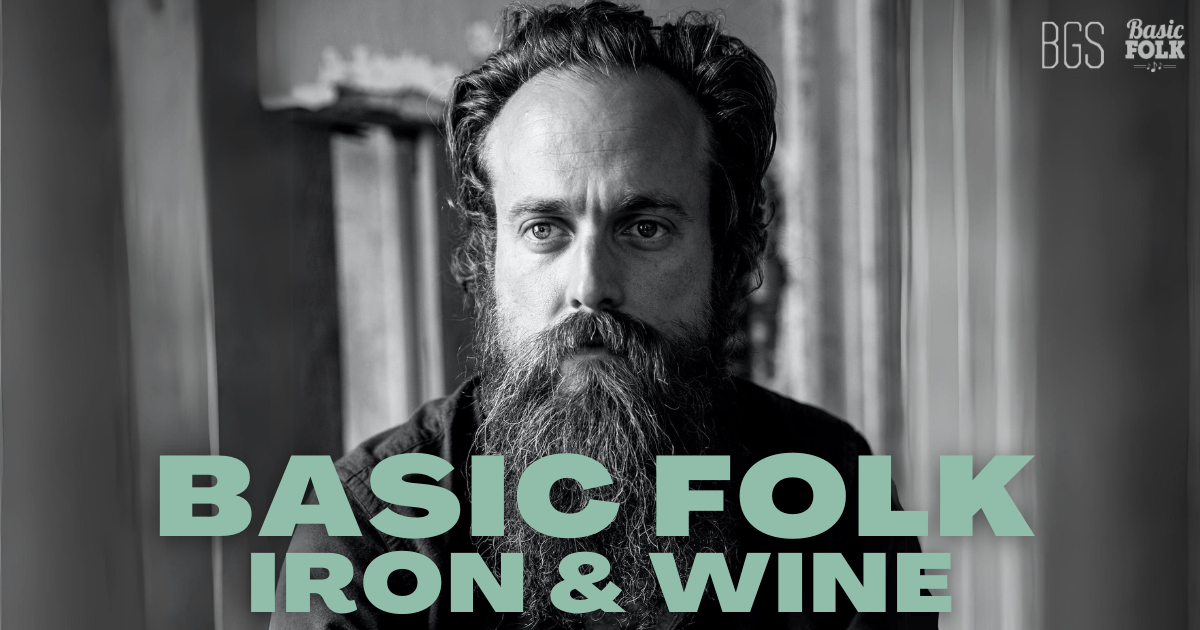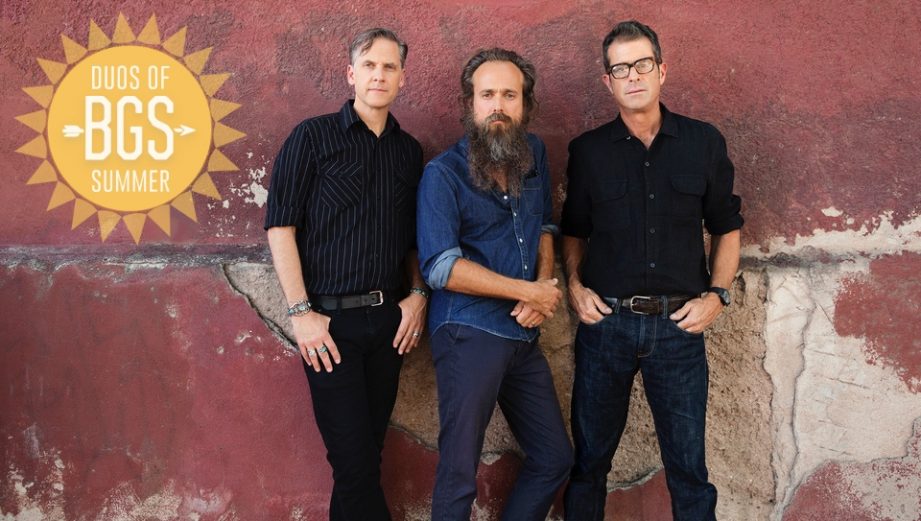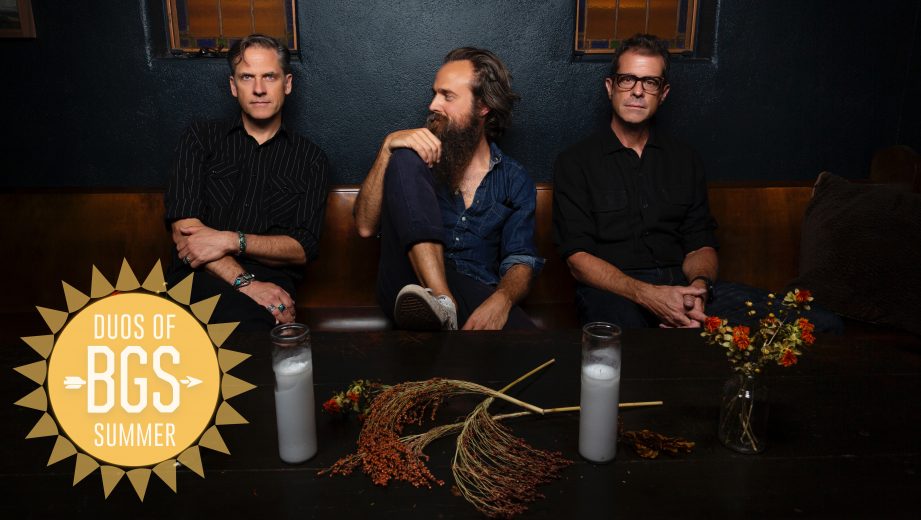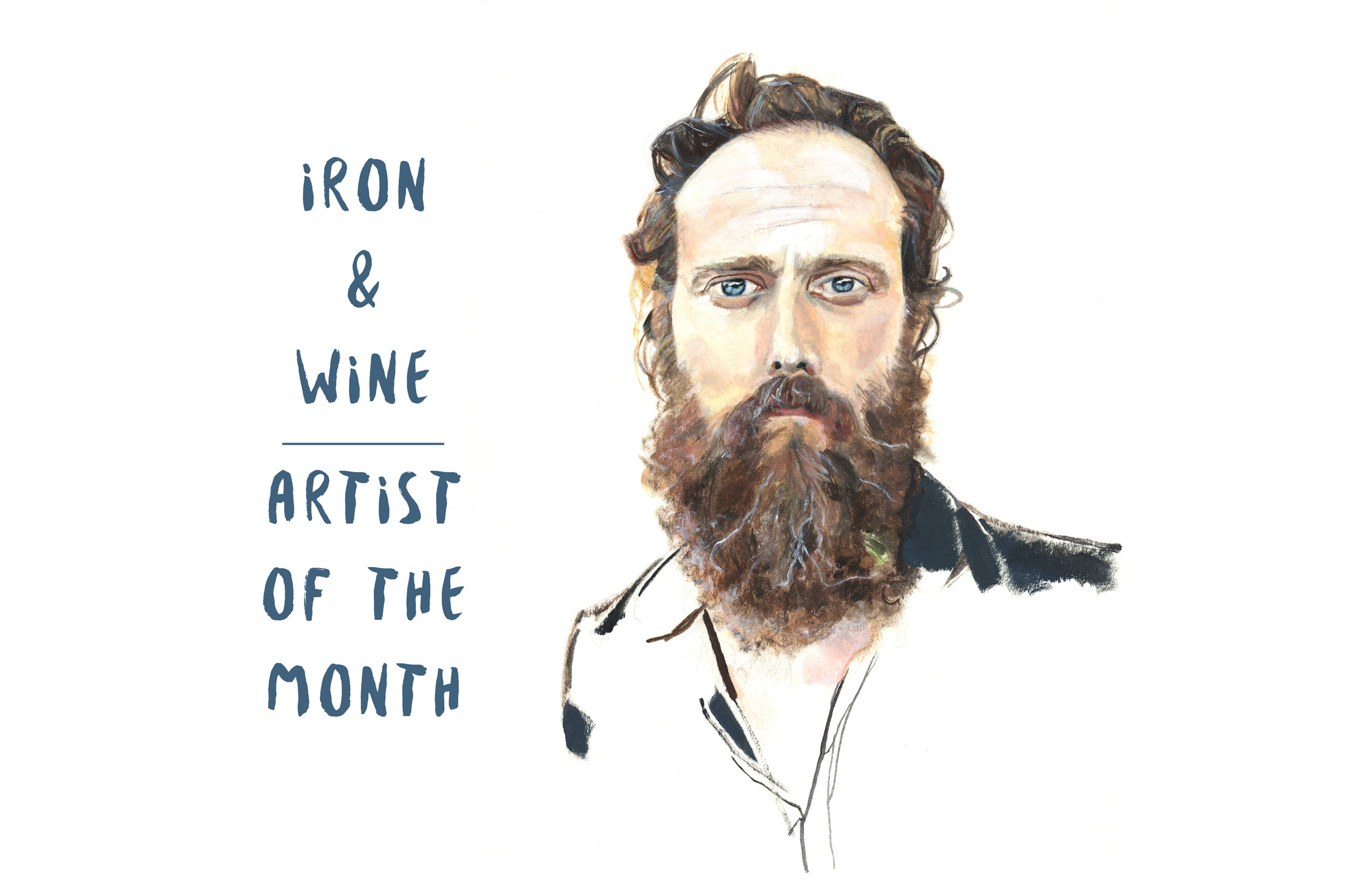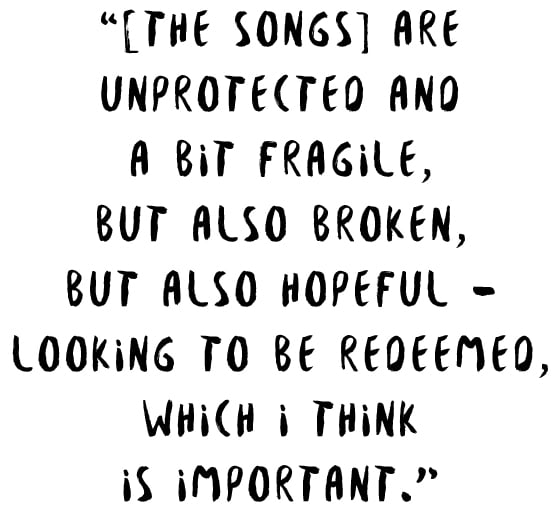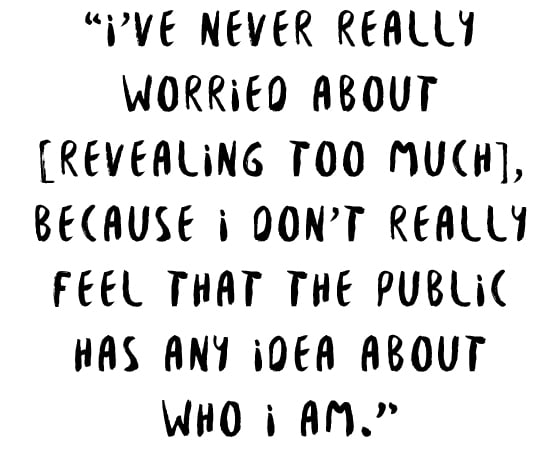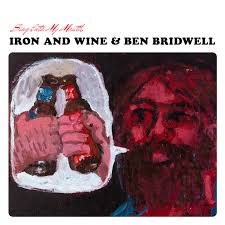Sam Beam and Joey Burns are just a few feet apart, but they can hardly hear each other. Sitting in nearby booths at a café in Washington, DC, they’re on a conference call – an old-school party line that, for all our technological advances since the invention of the telephone, isn’t working very well. As they discuss their lush, lovely new collaborative album, titled Years to Burn, they speak uncertainly, tentatively, as though testing the ground for landmines. Burns, chief singer and songwriter for the band Calexico, has to repeat himself for Beam, the man behind Iron & Wine.
This is the exact opposite of how they normally work. The sessions for Years to Burn, their first album together in nearly fifteen years, was defined by its easy, fluid communication, or sometimes by the lack of any need for communication at all. Beam’s puzzle-box lyrics reveal deeper meaning with each close listen, while Calexico’s lush accompaniment is grounded in, but not constrained by Latin American traditions as well as straightforward country rock.
The result is a record that takes more risks and yields more rewards than their strong 2005 EP, In the Reins, toggling between the dusty R&B of opener “What Heaven’s Left” to the stomping country-folk of “Father Mountain” to the Spanish-language lullaby that opens the multi-part epic “The Bitter Suite.”
“The sound we made together,” says Beam, “wasn’t about planning or conceptualizing or anything like that. We tried not to get too heavy about it. I’m always interested to hear the ideas they come up with. That’s where the joy is for me.”
Both Calexico and Iron & Wine are indie lifers, each act boasting long careers and sprawling, ambitiously diverse catalogs. Perhaps the secret to their longevity is their openness to new perspectives, new voices — in short, to collaborations like Years to Burn. What follows isn’t the precise conversation they had with the Bluegrass Situation, which was prevented by faulty technology. Instead, after speaking to them separately, their responses have been edited into something like an imagined conversation, a loose oral history of their lively new album as well as an exploration of their close collaboration.
BGS: It’s been nearly fifteen years since you released In the Reins. What made this moment a good time to follow it up?
Joey Burns: It was scheduling!
Sam Beam: “Why are we doing it now?” Is that the question? I can’t speak for Joey and John [Convertino, Calexico drummer and co-founder, who is sitting in the same café], but I always wanted to work with them again. It wasn’t a matter of us not wanting to or not having a good reason. We’d just gotten busy. We’re two different working bands, so it wasn’t very often that our schedules lined up. Finally we had to say, hey, if we don’t just make the time, if we don’t put it on the calendar, it’s never going to happen.
You recorded the album in Nashville. Why there?
SB: I’ve never recorded there before, but we’ve ended up being there a lot. We have a lot of friends who live there, so it was nice to finally work there.
JB: We did a couple of songs back in 2003 with Mark Nevers, but that was it. This time we worked at Sound Emporium with Matt Ross-Spang. Matt’s the master. And he’s got some badass hair, too. The man has got serious style.
SB: The last time we recorded, we didn’t really know each other. We learned each other through that process and from touring that record for a while. I felt like this recording session was about what we learned about each other as musicians touring on the road, although it’s hard to even compare the two sessions because they were so dramatically different.
What can you tell me about “The Bitter Suite,” which is the most elaborate arrangement on the record but also the centerpiece of Years to Burn?
JB: The simple answer is, I said to Sam, why don’t we take part of a verse of “Tennessee Train,” translate it into Spanish, and let Jacob [Valenzuela, Calexico trumpeter and vocalist] have a go at it? And we just kept on experimenting, to see what kind of direction the music would take. Then we were like, why don’t we just do some kind of groove? Because at that point there was no song yet that had a groove. So why don’t we bring that back into mix and see what happens? That song just because a variation on a theme. Sam, you came up with the title…
SB: That idea came from Sebastian [Steinberg, Iron & Wine bassist], who is always saying funny things. It’s a sober-sounding track. It’s bittersweet. So we took music that was the product of serendipity of something that happened in the studio, and we gave it a silly title. But it wasn’t planned. We just went in with these songs and tried to keep an open mind. When you’re in a room with people who have good ideas, you have to keep your ears open. But it was all just something that seemed fun at that moment.
I wish I could say there was some design to “The Bitter Suite.” There’s this thing in poetry where your brain really tries hard to make connections and make sense of things in a certain way. You put two lines together and you can dismiss them, but you can put three lines together and your brain will go nuts trying to figure out how they connect. I felt like that song was something along those lines: Let’s put together different sounds and different structures, let’s vamp on different chords and different feels, and let’s see what happens when you put them all together.

How much of the album was conceived that way?
JB: It was all completely intuitive. We received some demos from Sam a week before we met in Nashville, and I knew from experience that those demos were not necessarily set in stone. They’re just reference points. I think we were all open to them being malleable and adaptable. Plus we only had four or five days max booked for studio time. That was it. Those parameters forced us to do as much homework as we could, but also it forced us to be as open to what kinds of possibilities there could be.
If we’d had another two, three days, who knows what would have happened? But I had a lot of fun working within that framework. We didn’t invite others in, and we didn’t send track out to the other members of Calexico. It was just six musicians in the studio, the six who will go on tour. The only person outside that ensemble who played on the record was Paul Niehaus on pedal steel.
SB: Since we were only in the studio for a few days, all the decisions had to be made pretty quickly. I like that. I have a tendency to overthink things, especially if I don’t put a time limit on myself. So the album is a snapshot of what we were doing on the fly rather than the ultimate example of creative expression.
JB: Everyone is pretty comfortable behind their own instrument, so we got great sounds in that short period of time. When you start adding more layers or textures, that’s where things can sound congested… or they can sound even better. It can be tricky. Most of the record was done live. Sam’s really quite a phenomenal musician, so a lot of the basic tracks are first takes, then we added some overdubs, then we were done.
Sam, were you writing songs with these guys in mind?
SB: Not really. I finished some stuff for this. You end up with so many bits and bobs laying around that don’t fit into other songs, and they’re perfect for this kind of project. Folk-rock melodies are good for this sort of pairing, so I moved the more country-ish songs to the top of the pile. The one thing I did want to do was … bring in a finished script, one that has plenty of room for interpretation, because that was the only way to get finished in the amount of time we’re talking about.
Were there any songs that changed more than others during that process?
SB: The one we worked on the longest was the opening track, “What Heaven’s Left.” It’s really the only one where I had a more specific idea of what I wanted to get at, but I didn’t know how to communicate it. That’s why it was more difficult; I had something specific that I wanted to achieve. But even that one had lots of room, especially that full-band crunch at the end. We thought it should go longer, so we just decided to play longer and see what happened. The ending became a whole separate thing, just letting the ideas take hold and not limiting yourself and capturing what you’re feeling.
JB: That was one of those things where we had recorded the song and then listened back, and it must have been Sam who said, what if we just kept on playing? It feels like the song ends too soon. Then Jacob arrived; he came on day three. So we thought, why not just add him to the outro? I really enjoyed that moment, and it’s one of my favorite songs on the record.
SB: The guys in Calexico are very sensitive listeners, not just in terms of the music but the point of the song: What’s happening here? What are we trying to communicate? That’s something you don’t always get to talk about. Also, they like to rock the fuck out as often as possible. I trust them enough that even if we get into some kind of argument, they’re going to be feeling it just as much as me, so I should at least listen to them.
Were there any disagreements?
SB: No, we didn’t really have time! Everybody was being really supportive. There was never a shortage of ideas, so it was just a matter of how to politely say we need to concentrate on this or that if we’re going to get anything done.
JB: This was one of those instances where the music really reflects your inner voice. Every turn we took just seemed to come about naturally and effortlessly. I think we all expected we’d probably walk away with another EP, like In the Reins, which would have been great, but we wound up having such a good time and getting through the songs quickly enough that we came up with something much bigger and more experimental.
Photo credit: Piper Ferguson
